
 |
Primary pre-service teachers' understanding of students' internalising problems of mental health and wellbeing
Fiona Bryer and Jessica Signorini
Griffith Institute of Educational Research, Griffith University
An emerging national agenda for the mental health and wellbeing of young Australians has fostered an expectation that primary teachers can recognise and respond to students with internalising problems. A mixed method survey of fourth-year preservice teachers revealed patchy personal and practicum exposure to internalising problems and scant university preparation. Participants applied broad pedagogical principles from regular teaching practice to help students with these problems. They expressed their willingness to learn from colleagues about how to help these students, and a subsample further elaborated their reflections after practicum and coursework experiences. Graduating teachers will need more capacity than they currently have to support classroom participation of students with internalising problems in school settings.
Researchers have long understood that early signs of behavioural inhibitions, fearful feelings, and cognitive what-if worries (Keogh, 2003) can unfold into later problems in learning engagement in classroom activities and social interactions with peers; in turn, maladaptive acquisition of avoidant behaviour and distorted problem-solving can lead to increasingly negative views of self-competence by middle childhood (Fox & Calkins, 1993). These performance difficulties have fuelled tendencies to a range of internalising problems from social withdrawal, victimisation by other students, sad mood, to general unpreparedness to cope with age-typical expectations (Kingery et al., 2010).
Disordered coping has been expressed in irritable mood and flat affect (Bos & Vaughn, 2006; Gimpel & Holland, 2003). Behavioural indicators of shyness, fearfulness, and inhibited responding to new events have been expressed in passive disengagement (Coleman & Webber, 2002; Northey et al., 2003). Hence, everyday scanning of busy classrooms for normal lesson flow could miss subtle somatic expressions of distress (e.g., facial flushing, stomach pain, and headache). Moreover, longer periods of internalising symptoms from month to month and from year to year could be misinterpreted as personality trait rather than as problem expression.
Recent longitudinal research has confirmed that two-thirds of children with internalising problems have stable symptoms from 2 to 11 years (Sterba et al., 2007). For such children, subclinical vulnerabilities to stress and clinically disordered coping have magnified normal developmental fears and worries and interfered with normal developmental progress (Kertz & Woodruff-Borden, 2011). Such children have developed extreme and intense reactions to the otherwise adaptive purpose of anxiety to deal with age-appropriate fears, protect against danger, and mobilise evasive action. Rumination about what has happened in the past and what might happen in the future has affected the quality of classroom participation and capacity to do well academically through the primary years. A meta-analysis of American and Australian studies has confirmed the interfering effects of anxiety on classroom learning (Schonfeld et al., 2009).
Direct and indirect costs for the nation as well as for individuals and their families have been projected (ARACY, 2008; Campbell, 2004; Mental Health Council of Australia, 2008). Australian data on mental health from censuses in the 1990s were limited to adults, minimal, and concerned with feeling nervous and unhappy (AIHW, 1998). In the National Action Plan on Mental Health 2006-2011, the Council of Australian Governments (COAG, 2006) acknowledged that, when identified and treated early, mental health difficulties are less severe, of shorter duration, and less likely to recur. Community media (Lunn, 2008), school administration (Skalski & Smith, 2006), and teachers' national professional body (Australian College of Educators, 2005) shared a broad Australian acceptance of the need to build resources for adolescent resilience. The beyondblue initiative and MindMatters program (Wyn et al., 2000) were funded.
Primary teacher training has trailed behind community realisation that internalising problems experienced through childhood contribute to complex, chronic, and debilitating adult problems (Gardiner, 1994; Weist & Christodulu, 2000). Some interest in social-emotional learning and wellbeing has filtered into discussion about pedagogical quality in the ongoing current transformation of national curriculum and assessment (Ingvarson & Rowe, 2008). The new national teaching standard for a safe and supportive learning environment has included student wellbeing (Australian Institute for Teaching and School Leadership, 2011). However, Queensland preservice teachers have shown little confidence about topics related to wellbeing such as cybersafe use of ICTs in classrooms (Jamieson-Proctor & Finger, 2006). They also demonstrated little formal and systematic exposure to the specific topic of mandatory reporting of sexual abuse (Goldman, 2007), showed little capacity to meet behavioural and legal requirements (Goldman & Grimbeek, 2008), obtained little knowledge from coursework (Goldman & Grimbeek, 2009a), and were unfamiliar with the Queensland policy environment (Goldman & Grimbeek, 2009b). Hence, established ideas about what teachers are trained to do as curriculum managers have not caught up with emerging ideas about what extended roles and responsibilities teachers face as relationship managers.
Recommendations to counter adverse consequences of both age-appropriate and atypical fears have included structural supports and resources for building social relationships, reduction of unnecessary stress and other risks to the learning environment, and teaching of students about how to identify and regulate their fears (Masten & Coatsworth, 1998). The professional sense of teacher urgency attached to preventing bullying and overcoming defiant, aggressive, and antisocial interpersonal interactions (Swearer et al., 2010), however, has not generalised naturally to overcoming short- and long-term intrapersonal interference in the cognitive, social, and emotional development of many classroom learners (Greenberg et al., 2001). Kay-Lambkin et al. (2007) suggested that non-specific attention to students' mental health in teaching standards by state registration boards contributed to the variability of Australian preservice training about these matters. While distressed individual children have no doubt been assisted by individual teachers acting as caring professionals, supports for those students experiencing difficulties coping with classroom study and relationships has received little priority in preservice programs for primary teachers.
School-based education for mental health has been targeted as an opportunistic setting to implement federal governmental policy (MCEETYA, 2003) and community programming (Australian Network for Promotion, Prevention, and Early Intervention for Mental Health, 2008). Schools were positioned as the universal provider to meet child needs, minimise serious impacts in various facets of a child's life, and prevent negative trajectories into adulthood (Greenberg et al., 2003; Patton et al., 2003). Education systems developed basic knowledge-based curricula to inform students about mental health (see, for example, curriculum guidelines for improving student knowledge about physical and mental health published by Education Queensland [DETA, 2005, 2007, 2008] and also, responsibilities of schools for education about health outlined by Queensland Health, 2004). State employers adjusted their expectations for teachers of younger children (Rowling, 2007).
Various Australian process-based programs to teach coping skills to students were developed to mitigate individual risk of internalising problems in schools and classrooms (Slamet, 2006). Programs designed to improve resilience, life skills, and motivation (e.g., Friends for Life Program, Bounce Back, Aussie Optimism, and You Can Do It) occupied territorial niches in different states and competed with each other for "market share" across the country. Local availability was often more important than research evidence of their effectiveness. Teachers participating in classroom delivery of these programs often received some professional guidance. Implicit in this revised climate around schools and classrooms were bottom-up assumptions about implementation; that is, individual teachers, within their own resources, would use program experiences and specific training to maintain such initiatives, adapt to specific educational needs in their classrooms, and to disseminate these experiences to colleagues.
With increasing educational acceptance that mental health and wellbeing are essential to children's abilities to learn, teachers were drafted to play an important role in direct and active support for students' mental health. For example, the Hunter Institute of Mental Health (2007), funded by the Commonwealth Department of Health and Ageing, disseminated An Educator's Guide: Children and Young People's Wellbeing. Ideas for promoting wellbeing were listed; symptoms relevant to the early, middle, and senor years of schooling were described; and procedures were outlined for teachers who became concerned that students were at risk of emotional, behavioural, or mental health problems. Broadly, individual teachers were encouraged to take ownership of their responsibilities for student wellbeing, develop lesson plans appropriate for their students' needs for social skills and emotional regulation, and enact good practice in classroom observation, child and family counselling, referral, and safe and supportive principles.
Internationally, there has been doubt about the expectation that teachers in classroom settings are ready to observe and address internalising student behaviours (Abidin & Robinson, 2002; Auger, 2004; Lamarine, 1995). In Australia, Campbell (2003) questioned teachers' capacity to recognise students experiencing, or being at risk of experiencing, internalising problems. The hidden nature of many internalising problems in behaviour and learning posed a challenge to teacher identification of students' need for help and teacher willingness to prioritise extra educational support (Marchant et al., 2007). Australian studies have also demonstrated teachers' inconsistent recognition of anxious students (Campbell, 2004; Dadds et al., 1997). Moreover, several American studies indicated that teachers felt unprepared to help these students (Cramer & Paris, 2001, in Koller & Svoboda, 2002), lacked confidence about engaging in mental health matters (Walter et al., 2006), and were insecure about making an appropriate referral (Green, Clopton, & Pope, 1993). Recent Australian studies of secondary teachers, both inservice (Thornton, 2008) and preservice (Taylor et al., 2008), have maintained these doubts.
More broadly, a review of research on beginning teachers over a 30-year period revealed a common profile (Cherubini, 2009): A "toolbox" of technical skills in planning lessons and assessing curriculum, a survival mentality in the face of complex workplace demands, and idealistic hopes about the kinds of direction and support available from colleagues. Encounters with their first job often left them culture shocked, disappointed, and disinclined to take on new roles. Although some adapted and learned rapidly from experience and mentoring, many have continued to exit teaching (Henry et al., 2011). It seemed inevitable that we would find gaps in preservice preparedness to take on a classroom role in mental health, but the nature of those gaps and their implications for students' access to appropriate supports were not known.
Specifically, it was expected that idiosyncratic rather than formal sources of knowledge and experience would shape the emergent teacher role as a provider of mental health education in the classroom to young students with internalising problems. Moreover, it was expected that preservice teachers would have limited awareness of new expectations for their role outlined in mental health policy and programming. Finally, it was expected that novices' preconceptions about various aspects of teacher work (e.g., keen, principled in intentions, unprepared for classroom realities) would apply in this area.
Some participants (n = 24) also accepted an end-of-survey invitation to provide an email contact to receive a follow-up survey. Emails to off-campus participants after practicum contained a second consent form and the follow-up survey, to be completed within three weeks. An email reminder was sent two days prior to the due date, with attached copies of the follow-up and consent form. An ethics variation was obtained to allow a final appeal and extension to the timeline. Four more follow-up responses contributed to a total of 16 responses (66% response rate). Data were de-identified before analysis to ensure anonymity and confidentiality.
Research Question 1 was addressed in Sections 3-5. Section 3 on past exposure addressed prior knowledge, experience, and classroom application. Participants estimated frequency of internalising difficulties within a primary school class and distributed 25 students into a three-tier triangle representing low, medium, and high levels of risk for internalising problems in the class (see, for example, Merrell & Gueldner, 2010, p. 16, for an overview of this prevention science model); they then rated their confidence in this allocation and their awareness of additional students at risk. Participants also wrote about prior knowledge, shared where they acquired their knowledge, and gave examples of experiences. Finally, provided with a published Australian classroom estimate of 3-12 per cent high difficulty requiring psychological intervention and 20-30 per cent moderate difficulty needing a little extra support (Rickwood, 2005), they were asked to comment on similarities and differences to their own earlier estimates and to rate their overall knowledge of internalising problems and mental health.
Section 4 canvassed practicum experiences. Topics included encounters with internalising, checklists of behaviour, explanation about how they knew students were experiencing problems, identification of their worst experience, and a statement about the difference that good teaching can make to the success of students experiencing internalising problems. In Section 5, participants were asked to comment on two of six scenarios describing student internalising problems in primary school years from early separation anxiety to depression in late childhood. Each gender-neutral scenario described a student at risk but not yet diagnosed.
For Research Question 2, Sections 6 and 7 canvassed awareness of current policy and programs. Section 6 addressed participants' knowledge of Australian and Queensland policy and involved a recognition activity (tick familiar policies), a deeper knowledge activity (match federal and state policies to specific statements in those policies), and a practical comment about practice implications. Section 7 addressed their familiarity with programs in circulation in Queensland schools and involved a recognition activity (tick familiar prevention programs) and a recall activity (tick observed implementation of a program in specific locations such as a practicum school or their child's school). Participants were also asked to rate their comfortableness with a list of program activities (viz., trained in activities, liked doing them, and thought an identified activity might be helpful). They were invited to comment on factors that might influence their decision to implement a program in a classroom. For Research Question 3, Section 8 involved an open-ended written 5Rs reflection about their future practice (i.e., report "teacher role in promoting wellbeing, react about feelings about taking on this role", relate to "what...will assist you to work better with these students", reason about " factors ensuring [your practice] caters to the needs of these students", and reconstruct "how [given nondisruptive problems with negative consequences] do you see yourself adapting your future practice"; based on Bain et al., 2002). The 4-page follow-up survey inquired briefly about changes to knowledge and experience and more exposure to policy and prevention programs and then adapted the 5Rs questions to final reflections on direction of teaching practice with students with internalising problems.
All connections among text were counted automatically by parallel distributed processing of all occurrences and co-occurrences of small amounts of text (three-word default) in this powerful quantitatively based method of analysing content. Concept seeds underlying surface words were then "learned", and concepts were identified, ranked, and located within a two-dimensional space. The organisation of this mapping indicated the centrality of concepts, their frequency (shown as larger dots), and their proximity to each other. The software contained an option to check the reliability of analysis by repeatedly reprocessing original text data. Generation of different concepts and configurations after multiple relearnings would indicate problems in conceptual connectivity and fluctuation in surface text meanings contributing to seeding and learning of different underlying concepts. Relearning produced stable mappings of concepts and interrelationship in the set of maps used in this paper.
Transcripts of each participant's written responses to each question were formatted as Word files and entered into Leximancer for content analysis. Alterations during transcription concerned expansions of short-hand language (e.g., changing "stn" to "student") and correction of spelling mistakes. All changes were checked for consistency across responses and survey items and recorded by hand in a notebook. Italicisation has been used to distinguish concepts from other words in text.
Figure 1 shows the organisation of sources of knowledge inside and outside university, found to be stable across five separate relearnings. Removal of 30 per cent of concepts to unclutter the centre of the map revealed a basic set of family-to-friends and uni-to-prac concepts. Hand drawn lines displayed two simple dimensions. The most frequent concept was family (e.g., "family suffers from both anxiety and depression"), which, together with related media (e.g., "talk shows, e.g., Oprah, Kerrie-Anne" and "news reports and current affairs"), contrasted with information from friends. The second dimension of sources comprised uni (related to second and third-year pedagogical course studies in middle years and management of behaviour) and prac (related to discussing students' anxiety with teachers). Some participants again referred to their limited general knowledge.
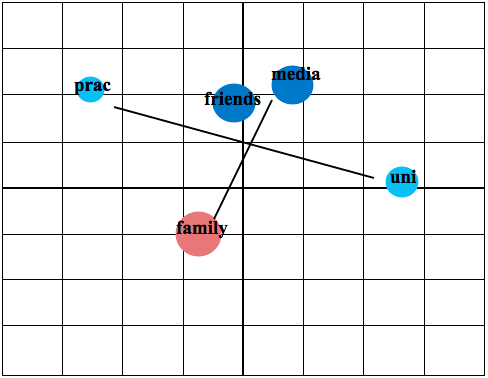
Figure 1: Preservice teachers' sources of knowledge about internalising problems
Practicum was the most widely cited setting for participants' direct experience with these problems. Discussions with a supervising teacher and observations of student behaviour brought children's problems to their attention. Most participants reported witnessing each problem behaviour related to internalising, including low self-esteem (n = 39), socially withdrawn (n = 38), anxious and stressed (n = 37), bullied (n = 36), and sad, gloomy and depressed (n = 29). Participants recalled specific incidents (e.g., students who cried, bit nails, appeared anxious and stressed, exhibited low self-esteem, and withdrew from peers). The "worst" problem behaviour included suicidal talk, selective mutism, and episodes of throwing chairs and hiding under desks. Some preservice teachers (n = 15) recalled limited exposure, and a few participants (n = 4) doubted their capacity to recognise internalising problems (e.g., "Hard to say, I am sure I've had experiences with it but just may not have known"). Moreover, it was evident that participant awareness of internalising problems was highly varied across different practicum settings.
Figure 2 presents the map of all concepts about the difference made by good teaching for students with internalising problems. This question generated much more text than previous open-ended questions. Map space was well populated, with question concepts of difference and behaviour anchoring the vertical axis. A diagonally aligned organisation of concepts comprised two main clusters of fluent and sophisticated position statements, each with a hedging argument expressed in two smaller satellite clusters of companion concepts. Preservice teachers testified to the principles and values guiding their practice (top left quadrant). First, the best interests of the child should guide learning, and, second, a positive environment for learning and taking time to make students feel safe should make an important difference. The high ranking concept, support from professionals, indicated that outside help affects the difference in using these principles. Lower ranking satellite concepts identified occasions when participants doubted their supervisory teacher's handling of a situation relative to this principled approach to practice (top left quadrant). For their second main statement, they strongly affirmed teaching's huge effect (bottom right quadrant) and also considered working with parents important to intervention (bottom left quadrant).
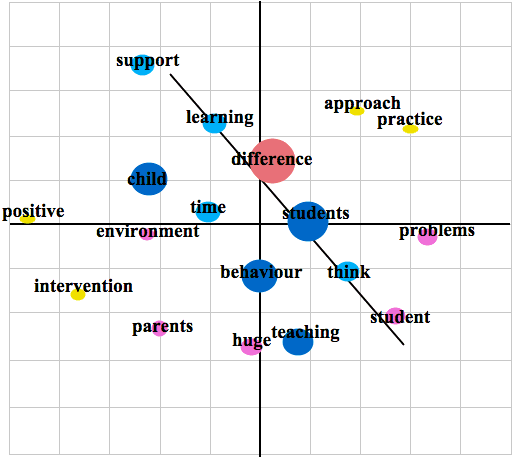
Figure 2: Map of concepts about "the difference that good teaching can make"
| Policy/Curriculum Framework | Familiar | Unfamiliar |
| National Action Plan on Mental Health | 4 | 38 |
| Working Together for Healthy Schools (Qld) | 11 | 31 |
| Student Health and Wellbeing Curriculum Framework (Qld) | 9 | 33 |
| Student Protection (Qld) | 5 | 37 |
Participants usually responded to all six classroom-based scenarios (i.e., separation, self-esteem, withdrawal, bullied, anxious, and sad). They correctly placed the target child in the middle tier of risk, justified that decision from the description of the student's behaviour, and reported encounters with internalising problems similar to those depicted by the scenarios. They offered one-to-one, group, and whole class elements of practice to respond to a question about a child's personal, academic, and social needs and adapted them to different scenarios.
Figure 3 shows all concepts about these preservice teachers' feelings about these students. They expressed concern for four of the six children, with the most complex feelings expressed in the first two scenarios. Later scenarios with older students contained fewer concepts with large unpopulated spaces. This order effect could indicate fatigue in writing about their concern or limited capacity to engage with the withdrawn Cameron or overanxious Brooklyn, but they wrote about their concern for sad Alex. Participants' worried feelings involved awareness of barriers to learning (e.g., Cameron's problem is impacting his/her learning; Tyler's work needs behaviour of other children changed). Participants considered who they might ask for help (e.g., guidance officer, administrator, other teachers, and parents) or where they could seek help (e.g., websites, books dealing with bullying, and organisations or programs dealing with self-esteem).
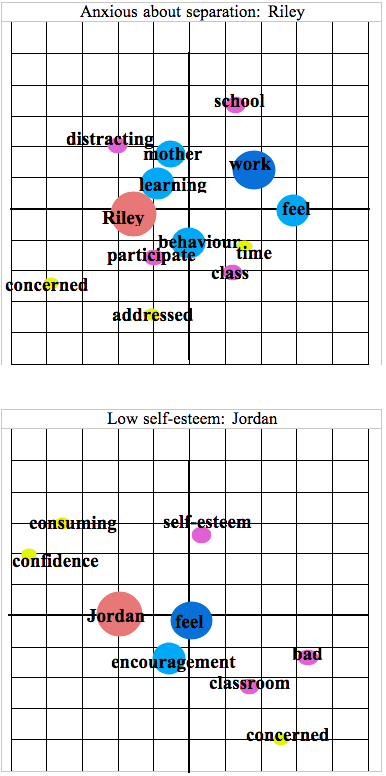
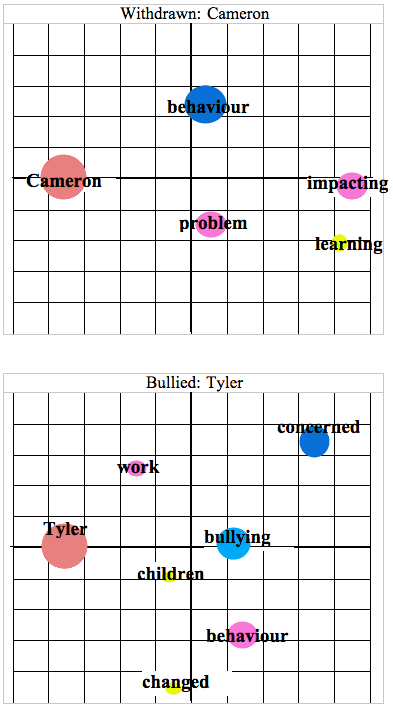
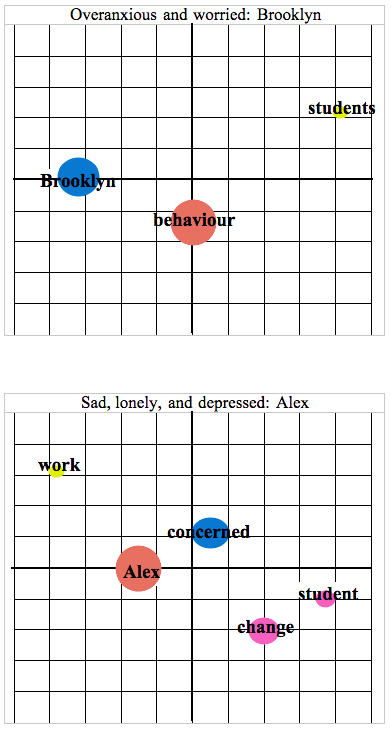
Figure 3: Preservice teachers' feelings about each scenario child
Table 2 shows that at least one participant could identify each nominated prevention program. One Queenslander could identify the West Australian Aussie Optimism program. However, most of the 42 participants were unfamiliar with these programs, and even fewer had seen them in use. Several practicum schools were using the You Can Do It package, but otherwise local and national resilience building approaches were virtually unknown to these preservice teachers. Contacts with these programs were scattered among media, university, prac, school, and work places. Media coverage seemed to account for the greater recognition of the adolescent-focused MindMatters and beyondblue. However, many participants reported that they had trained in, liked, or considered helpful, the range of instructional activities (e.g., role-play, small group exercises, discussions, and assisting students in developing positive thinking) present in many prevention programs, indicating confidence in component skills.
| Prevention program | Familiar | Unfamiliar |
| MindMatters | 17 | 25 |
| You Can Do It | 16 | 26 |
| beyondblue Schools Intervention | 12 | 30 |
| Bounce Back | 6 | 36 |
| Friends for Life | 6 | 36 |
| KidsMatter | 5 | 37 |
| Resourceful Adolescent Program (RAP) | 4 | 38 |
| Aussie Optimism | 1 | 41 |
Figure 4 presents three basic clusters of concepts about what would encourage or discourage a decision to use a program in a classroom. Participants commented on support from the school to meet the needs of these students (top half), comfort level with a program (centre left), and time to acquire skills, with a vague call for help from parents (bottom left quadrant). Although time (bottom right quadrant) to implement these programs was the most important constraint, some participants valued these programs (e.g., "Time is always an issue, but the benefits of these types of programs outweigh this" and "I feel it [time] is justifiably used in this way").

Figure 4: Map of what encourages or discourages program use
Figure 5 shows their initial and final maps for the five reflective questions. Initial R1 descriptions of helping students became calls for proactive support for the whole class. Participants reframed immediate R2 feelings from worry into optimism. Their initial minimalist R3 information about students from prac became a richer understanding of classroom presence and needs. Their R4 analysis of critical issues changed from generic reference to professional information to more active targeting of knowing how to provide support and understanding strategies. For their R5 reconstruction of their practice for future use, they elaborated on their initial focus on creating safe environments to address problems to include intentions to consult school policy, seek wider support, differentiate curriculum, and approach individuals' problems as a whole class.
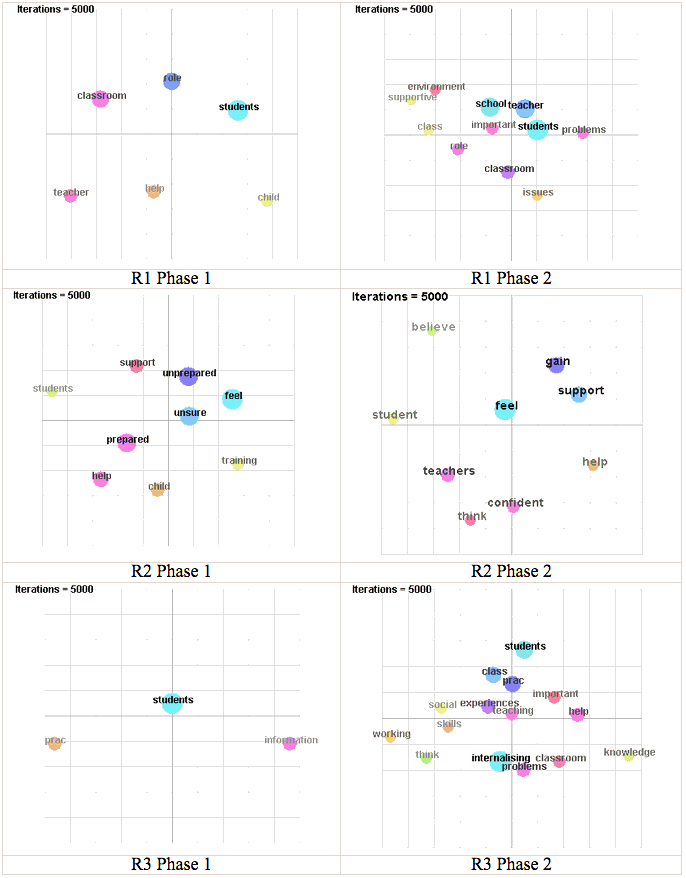
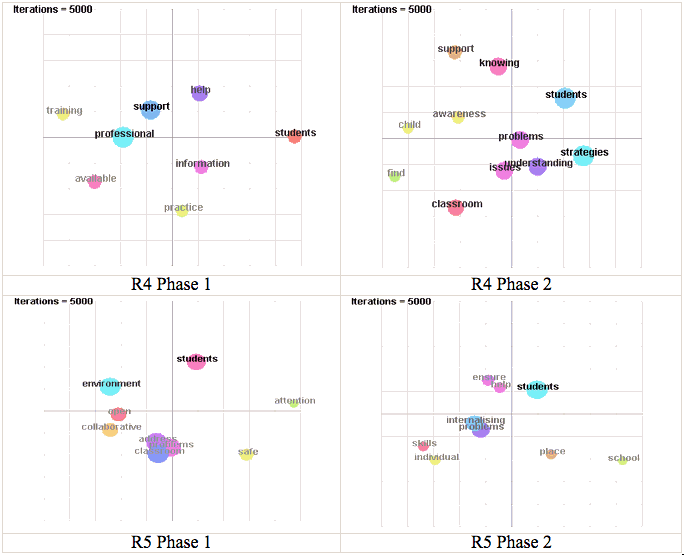
Figure 5: Maps of 5Rs reflections of subset participants (n = 16) for initial and final phases
The volunteers willing to return a lengthy, comprehensive, and demanding survey comprise 20% of this preservice cohort. Participants from this graduating class of primary teachers value a safe and supportive environment for all students. They may be treating the survey as an activity that might prepare them for wider roles and responsibilities. They are honest about their limited knowledge and need for outside assistance and open to reshaping their future roles to foster the wellbeing of students with internalising problems. Yet, it seems that this "new" aspect of teaching expectations may leave new teachers even more vulnerable to culture shock (Cherubini, 2009). Volunteers make frequent statements about waiting until their final short six-week semester and six-week internship to come to grips with mental health issues and aspects of teacher work beyond acquisition of technical competence. Given that 80 per cent did not volunteer to learn more about internalising problems via the survey, the comparably low return rate from a state survey of experienced teachers (Graham et al., 2011) suggests that mental health service issues remain widespread.
Regular classrooms in primary school remain an appropriate place to support the wellbeing for students with social, emotional, and behavioural difficulties. Yet, educational servicing of mental health generally and internalising problems specifically appears heir to the difficulties of much planned reform in education. That is, teachers are left to find ways to implement a social curriculum reform with general but fragmented support. The specific value of studies showing what beginning teachers don't know or can't do (e.g., Goldman & Grimbeek, 2009a) is to challenge reformist advocacy for new roles that is complacent about unforeseen consequences for students and their teachers. Reform requires more institutional commitment than the goodwill of another generation of teachers "to give it a go."
These studies challenge policymakers and educational authorities to prepare for and resource the effective delivery of new roles. The KidsMatter package (Graetz et al., 2008) and the Westmead School-Link Initiative (www.schoollink.chw.edu.au), among others, are reaching into primary schools. Methodical and formal instruction in doable practices seems to be the only way to shrink the real gap in teachers' capacity to deliver an effective classroom approach to support wellbeing (Knight, 2009). Teacher collaboration about the pedagogy for a resilience-building curriculum of wellbeing needs undergraduate training in local school-based programs such as Cool Kids and Friends (Nehmy, 2010; Neil & Christensen, 2009). A low-end estimate of the time needed to teach a social skill curriculum effectively has been 1.5 per cent of total curriculum (Elliott & Gresham, 2010). Early screening to detect psychological distress by school psychological services is needed not only to treat clinical distress but also to mobilise and coordinate teacher-delivered prevention and early intervention programs to reduce preventable distress (Walker, 2010).
Another ethical issue arises from the recurrent thread throughout participants' survey responses that calls for more professional knowledge, practice guidelines, and support services. The concern is whether and how studies of limits to effective teacher practice cross the boundary between raising professional consciousness and undermining natural confidence. Follow-up participants seem to become more sensitive to students' distress. Nonparticipating graduating teachers, however, may become entrenched in avoidance strategies to deal with their own stress about being unprepared. For example, they may argue that responsibility lies with parents to refer their child, ignore signs of distress, and tell students to "buck up and get on with it." They may fear becoming depressed. Although ethical consent procedures precluded a demand for reasons for nonparticipation, requesting return of nil response surveys may clarify different reasons for choosing not to respond (e.g., nothing to contribute, little interest and perceived relevance, survey too long).
Abidin, R. R., & Robinson, L. L. (2002). Stress, bias, or professionalism: What drives teachers' referral judgments of students with challenging behaviours? Journal of Emotional and Behavioural Disorders, 10(4), 204-212. http://dx.doi.org/10.1177/10634266020100040201
Auger, R. W. (2004). The accuracy of teacher reports in the identification of middle school students with depressive symptomatology. Psychology in the Schools, 41(3), 379-389.
Australian College of Educators. (2005). Beyondblue. Professional Educator, 4(1), 30-34.
Australian Institute of Health and Welfare (AIHW). (1998). Australia's health 1998. Australia's health no. 6. Cat. no. AUS 10. Canberra: Australia: Author.
Australian Institute of Health and Welfare (AIHW). (2007). Young Australians: Their health and wellbeing 2007. AIHW cat no. PHE 87. Canberra, Australia: Author.
Australian Institute for Teaching and School Leadership. (2011, Feb.). National professional standards for teachers. Carlton South, Vic.: Education Services Australia.
Australian Network for Promotion, Prevention and Early Intervention for Mental Health. (2008). Mental health promotion and illness prevention in school settings.
Australian Research Alliance for Children & Youth (ARACY). (2008, October). Report card: The wellbeing of young Australians. Canberra: Author.
Barrett, P. M., Farrell, L. J., Ollendick, T. H., & Dadds, M. (2006). Long-term outcomes of an Australian university prevention trial of anxiety and depression symptoms in children and youth: An evaluation of the friends program. Journal of Clinical Child and Adolescent Psychology, 35(3), 403-411.
Bain, J. D., Ballantyne, R., Mills, C., & Lester, N.C. (2002). Reflecting on practice: Student teachers' perspective. Flaxton: Post Press.
Bayer, J. K., Sanson, A. V., & Hemphill, S. A. (2006). Parent influences on early childhood internalising difficulties. Journal of Applied and Developmental Psychology, 27, 542-559.
Bear, G. G. (2010). School discipline and self-discipline: A practical guide to promoting prosocial student behaviour. New York: Guilford
Beaver, B. R. (2008). A positive approach to children's internalising problems. Professional Psychology: Research and Practice, 39(2), 129-136. http://dx.doi.org/10.1037/0735-7028.39.2.129
Bos, C. S., & Vaughn, S. (2006). Strategies for teaching students with learning and behaviour problems (6th ed.). Boston: Pearson/Allyn & Bacon.
Campbell, M. A. (2003). An innovative multi-disciplinary approach to identifying at-risk students in primary schools. Australian Journal of Guidance and Counselling, 13, 159-166.
Campbell, M. A. (2004). Identification of "at-risk" students for prevention and early intervention programs in secondary schools. Australian Journal of Guidance and Counselling, 14(1), 65-77.
Cherubini, L. (2009). Reconciling the tensions of new teachers' socialisation into school culture: A review of the research. Issues in Educational Research, 19(2), 83-99. http://www.iier.org.au/iier19/cherubini.html
Coleman, M. C., & Webber, J. (2002). Emotional and behavioural disorders: Theory and practice (4th ed.). Boston, MA: Allyn and Bacon.
Council of Australian Governments (COAG). (2006). National Action Plan on Mental Health 2006-2011. Australian Government Department of Health and Aging. http://www.health.gov.au/coagmentalhealth
Dadds, M. R., Spence, S. H., Holland, D. E., Barrett, P. M., & Laurens, K. R. (1997). Prevention and early intervention for anxiety disorders: A controlled trial. Journal of Consulting and Clinical Psychology, 65(4), 627-635.
Dadds, M. R., Seinen, A., Roth, J., & Harnett, P. (2000). Early intervention for anxiety disorders in children and adolescents (Vol. 2). Bedford Park, South Australia: The Australian Early Intervention Network for Mental Health in Young People.
Denscombe, M. (2007). Questionnaires. In The good research guide: For small-scale social research projects (3rd ed.; Ch. 9). New York: Open University Press.
Department of Education, Training and the Arts (DETA). (2008). SMS-PR-035: Supporting students' mental health and wellbeing. Queensland Government (Education Queensland). http://education.qld.gov.au/strategic/eppr/students/smspr035/
Department of Education, Training and the Arts (DETA). (2007). Information for teachers. Brisbane: Queensland Government. http://education.qld.gov.au/studentservices/protection/mentalhealth/teachers.html
Department of Education, Training and the Arts (DETA). (2005). Introducing the Student Health and Wellbeing Curriculum Framework. Brisbane: Queensland Government. http://education.qld.gov.au/schools/healthy/framework/introduction.html
Edwards, C. H. (2008). Classroom discipline and management (5th ed.). Hoboken, NJ: John Wiley & Sons.
Elliott, S. N., & Greshan, F. M. (2010). Social Skills Improvement System: Classwide intervention program teacher's guide. Minneapolis, MN: Pearson.
Fox, N. A., & Calkins, S. D. (1993). Pathways to aggression and social withdrawal: Interactions among temperament, attachment, and regulation. In K. H. Rubin & J. B. Asendorpf (Eds.), Social withdrawal, inhibition, and shyness in childhood (pp. 81-100). Hillsdale, NJ: Lawrence Erlbaum Associates.
Gardiner, J. (1994). Differential teacher response to type of behavioural disturbance: The good, the bad and the forgotten. Paper presented at the Australian Association for Research in Education Conference, University of Newcastle. http://www.aare.edu.au/94pap/gardj94372.txt
Gimpel, G. A., & Holland, M. L. (2003). Emotional and behavioural problems of young children: Effective interventions in the preschool and kindergarten years. New York: Guilford Press.
Goldman, J. D. G. (2007). Primary school student-teachers' knowledge and understandings of child sexual abuse and its mandatory reporting. International Journal of Educational Research, 46, 368-381.
Goldman, J. D. G., & Grimbeek, P. M. (2008). Student teachers' understanding of policy behavioural directives concerning the reporting of child sexual abuse: Findings from one Australian state. Educational Research, 50(3), 291-305.
Goldman, J. D. G., & Grimbeek, P. M. (2009a). Department of Education policy on mandatory reporting of child sexual abuse: Primary school student-teachers' knowledge and confidence. Educational Practice and Theory, 91, 112,
Goldman, J. D. G., & Grimbeek, P. M. (2009b). How university student teachers for primary school learn about Department of Education Policy on child sexual abuse, and mandatory reporting: The sources of their professional information. Higher Education, 58, 221-239.
Graetz, B., Littlefield, L.,Trinder, M., Dobia, B., Souter, M., Champion, C., Boucher, S., Killick-Moran, C., & Cummins, R. (2008). KidsMatter: A population health model to support student mental health and wellbeing in primary schools. The International Journal of Mental Health Promotion, 10(4), 13-20.
Graham, A., Phelps, R., Maddison, C., & Fitzgerald, R. (2011). Supporting children's mental health in schools: Teacher views. Teachers and Teaching, 17(4), 479-496. http://epubs.scu.edu.au/ccyp_pubs/45/
Green, M. T., Clopton, J. R., & Pope, A. W. (1993). Understanding gender differences in referral of children to mental health services. Journal of Emotional and Behavioural Disorders, 4(3), 182-190.
Greenberg, M. T., Domitrovich, C., & Bumbarger, B. (2001). The prevention of mental disorders in school-aged children: Current state of the field. Prevention and Treatment, 4, Article 1.
Greenberg, M. T., Weissberg, R. P., O'Brien, M. U., Zins, J. E., Fredericks, L., Resnik, H., et al. (2003). School-based prevention: Promoting positive social development through social and emotional learning. American Psychologist, 58, 466-474.
Gresham, F. M., & Kern, L. (2004). Internalising behaviour problems in children and adolescents. In R.B. Rutherford, Jr, M. M. Quinn, & S. R. Mathur (Eds.), Handbook of research in emotional and behavioural disorders (pp. 262-281). New York, NY: Guilford Press.
Harris, A. (2003). Behind the classroom door: The challenge of organisational and pedagogical change. Journal of Educational Change, 4, 369-382.
Henry, G. T., Bastian, K. C., & Fortner, C. K. (2011). Stayers and leavers: Early-career teacher effectiveness and attrition. Educational Researcher, 40(6), 271-280. http://dx.doi.org/10.3102/0013189X11419042
Hunter Institute of Mental Health. (2007). Response Ability resources for teacher education. Newcastle: Commonwealth of Australia, Department of Health and Ageing. http://www.responseability.org/
Ingvarson, L., & Rowe, K. (2008). Conceptualising and evaluating teacher quality: Substantive and methodological issues. Australian Journal of Education, 52(1), 5-35.
Jamieson-Proctor, R., & Finger, G. (2006). Relationship between pre-service and practising teachers' confidence and beliefs about using ICT. Australian Educational Computing, 21(2), 25-33.
Kay-Lambkin, F., Kemp, E., Stafford, K., & Hazell, T. (2007). Mental health promotion and early intervention in early childhood and primary school settings: A review. Journal of Student Wellbeing, 1(1), 31-56.
Keogh, B. K. (2003). Temperament in the classroom: Understanding individual differences. Baltimore, MD: P.H. Brookes
Kertz. S. J., & Woodruff-Borden, J. (2011). The developmental psychopathology of worry. Clinical Child and Family Psychology Review, 14, 174-197. http://dx.doi.org/10.1007/s10567-001-0086-3
Kingery, J. N., Erdley, C.A., Marshall, K. C. Whitaker, K. G., & Reuter, T. T. (2010). Peer experiences of anxious and socially withdrawn youths: An integrative review of the developmental and clinical literature. Clinical Child and Family Psychology Review, 13, 91-128.
Knight, J. (2009). What can we do about teacher resistance? If school leaders understand the nature of resistance, they can improve their relationships with teachers and increase teacher implementation of proven practices. Phi Delta Kappan, 90(7), 1-7.
Koller, J. R., & Svoboda, S. K. (2002). The application of a strengths-based mental health approach in schools. Childhood Education, 78(5), 291-294.
Lamarine, R. J. (1995). Child and adolescent depression. The Journal of School Health, 65(9), 390-393.
Lunn, S. (2008, September 8). One pupil in five needs mental health or emotional support. The Australian.
Marchant, M. R., Solano, B. R., Fisher, A. K., Caldarella, P., Young, K. R., & Renshaw, T. L. (2007). Modifying socially withdrawn behaviour: A playground intervention for students with internalising behaviours. Psychology in the Schools, 44(8). 779-793.
Masten, A. S., & Coatsworth, J. D. (1998). The development of competence in favorable and unfavorable environments. American Psychologist, 53(2), 205-220.
Mental Health Council of Australia. (2008). Mental health services failing young people. September 8, 2008. http://www.mhca.org.au/documents/MHservicesfailingyoungpeople.pdf
Merrell, K. W., & Gueldner, B. A. (2010). Social and emotional learning in the classroom. New York: Guilford.
Ministerial Council on Education, Employment, Training and Youth Affairs (MCEETYA). (2003). National Safe Schools Framework. http://www.dest.gov.au/sectors/school_education/publications_resources/profiles/national_safe_schools_framework.htm
Murray, J. A. (2005). Approaches to children, young people and mental health: Confusion in the ranks, confusion among the commanders. Australian Journal of Guidance and Counselling, 15(2), 182-194.
Nehmy, T. J. (2010). School-based prevention of depression and anxiety in Australia: Current research and future directions. Clinical Psychologist, 14, 74-83. http://dx.doi.org/10.1080/13284207.2010.524884
Neil, A. L., & Christensen, H. (2009). Efficacy and effectiveness of school-based prevention and early intervention programs for anxiety. Clinical Child Psychology, 29, 208-215. http://dx.doi.org/10.1016/j.cpr.2009.01.002
Northey, W. F. Jr, Wells, K. C., Silverman, W. K., & Bailey, C. E. (2003). Childhood behavioural and emotional disorder. Journal of Marital and Family Therapy, 29(4), 523-570.
Patton, G., Franzcp, M. D., Bond, L., Butler, H., & Glover, S. (2003). Changing schools, changing health? Design and implementation of the Gatehouse Project. Journal of Adolescent Health, 33, 231-239.
Pendergast, D., Garvis, S., & Kanasa, H. (2011). Insight from the public on home economics and formal food literacy. Family and Consumer Sciences Research Journal, 39(4), 415-430. http://dx.doi.org/10.1111/j.1552-3934.2011.02079.x
Penn-Edwards, S. (2010). Computer aided phenomenography: The role of Leximancer computer software in phenomenographic investigation. The Qualitative Report, 15(2), 252-267. http://www.nova.edu/ssss/QR/QR15-2/penn-edwards.pdf
Queensland Health. (2004). Working Together for Health Schools: A Queensland Health Position Statement and Practice Framework. Brisbane: Queensland Government. http://www.health.qld.gov.au/publications/childhealth/Schools_policy.pdf
Rickwood, D. (2005). Supporting young people at school with high mental health needs. Australian Journal of Guidance and Counselling, 15(2), 137-155.
Rowling, L. (2007). School mental health promotion: MindMatters as an example of mental health reform. Health Promotion Journal of Australia, 18(3), 229-235.
Sburlati, E. S., Schniering, C. A., Lyneham, H. J., & Rapee, R. M. (2011). A model of therapist competencies for the empirically supported cognitive-behavioural treatment of child and adolescent anxiety and depressive disorders. Clinical Child and Family Psychology Review, 14(1), 89-109. http://dx.doi.org/10.1007/s10567-011-0083-6
Scott, T. L., Pachana, N. A., & Sofronoff, K. (2011). Survey of current curriculum practices within Australian postgraduate clinical training programmes: Students' and programme directors' perspectives. Australian Psychologist, 46, 77-89.
Silverman, S., & DiGiuseppe, R. (2001). Cognitive-behavioural constructs and children's behavioural and emotional problems. Journal of Rational-Emotive and Cognitive-Behaviour Therapy, 19(2), 119-134.
Skalski, A. K., & Smith, M. J. (2006). Responding to the mental health needs of students. Principal Leadership, 7(1), 12-15.
Slamet, D. (2006). Keep it in mind. Australian Educator, 52, 22-24.
Smith, A. E., & Humphreys, M. S. (2006). Evaluation of unsupervised semantic mapping of natural language with Leximancer concept mapping. Behaviour Research Methods, 28(2), 262-279.
Sterba, S. K., Prinstein, M. J., &. Cox, M. J. (2007). Trajectories of internalizing problems across childhood: Heterogeneity, external validity, and gender differences. Development and Psychopathology, 19, 345-366. http://dx.doi.org/10.1017/S0954579407070174
Swearer, S. M., Espelage, D. L., Vaillancourt, T., & Hymel, S. (2010). What can be done about school bullying?: Linking research to educational practice. Educational Researcher, 39(1), 38-47. http://dx.doi.org/10.3102/0013189X09357622
Taylor, L., Prain, V., & Rosengren, R. (2008). Pre-service teachers' engagement with student wellbeing. Curriculum Perspectives, 28(1), 21-34.
Thornton, S. (2008). Wellbeing. Professional Educator, 7(2), 24-27.
Walker, B. A. (2010). Effective schoolwide screening to identify students at risk for social and behavioral problems. Intervention in School and Clinic, 46, 104-110.
Walter, H. J., Gouze, K., & Lim, K. G. (2006). Teachers' beliefs about mental health needs in inner city elementary schools. Journal of the American Academy of Child and Adolescent Psychiatry, 45(1), 61-68.
Weaven, S., & Grace, D. (2010). Childcare service quality across competing business structures. Australian Journal of Early Education, 35(2), 54-62.
Weist, M. D., & Christodulu, K. V. (2000). Expanded school mental health programs: Advancing reform and closing the gap between research and practice. The Journal of School Health, 70(5), 195-200.
Wyn, J., Cahill, H., Holdsworth, R., Rowling, L., & Carson, S. (2000). MindMatters, a whole-school approach to promoting mental health and wellbeing. Australian and New Zealand Journal of Psychiatry, 34(4), 594-601.
Zahn-Waxler, C., Klimes-Dougan, B., & Slattery, M. J. (2000). Internalising problems of childhood and adolescence: Prospects, pitfalls, and progress in understanding the development of anxiety and depression. Development and Psychopathology, 12, 443-466.
Zubrick, S. R., Silburn, S. R., Burton, P., & Blair, E. (2000). Mental health disorders in children and young people: Scope, cause, and prevention. Australian and New Zealand Journal of Psychiatry, 34(4), 570-578.
| Authors: Fiona Bryer has a PhD in psychology. She teaches classwide behavioural support for primary teachers and has research interests in various settings for teacher practice (school-wide, middle school, early intervention, inclusion). Email: f.bryer@griffith.edu.au Jessica Signorini has an honours degree in education and a masters degree in educational studies majoring in guidance and counselling. She has taught in primary schools in the classroom and in intervention roles (literacy difficulties, indigenous support). Email: jessica.signorini@uqconnect.edu.au Please cite as: Bryer, F. & Signorini, J. (2011). Primary pre-service teachers' understanding of students' internalising problems of mental health and wellbeing. Issues In Educational Research, 21(3), 233-258. http://www.iier.org.au/iier21/bryer.html |